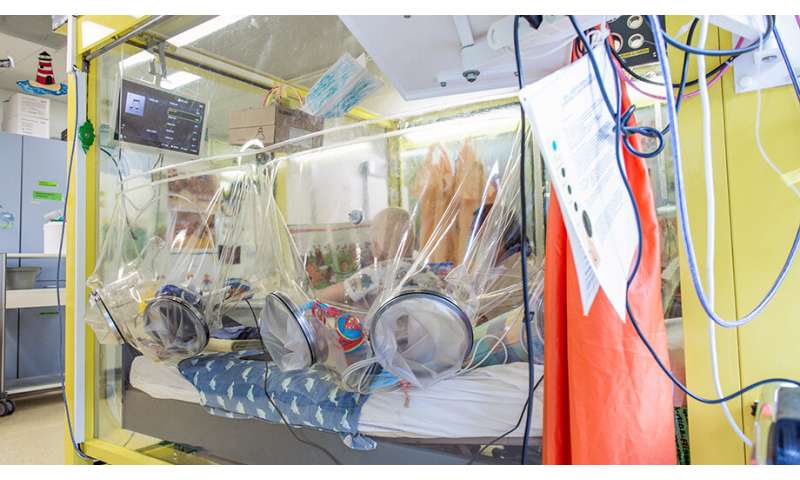
Acute lymphoblastic leukemia is the most common form of cancer affecting children in Switzerland and, unfortunately, is often incurable. Researchers from the University of Zurich and the University Children’s Hospital Zurich have now found a way to stop the driving force behind this type of leukemia at a molecular level and develop a targeted therapy.
Acute lymphoblastic leukemia (ALL) is a form of blood cancer that primarily affects children and young people. It involves large quantities of malignant progenitor cells building up in a person’s blood instead of healthy white blood cells. This is often caused by a change in genetic material, with two chromosomes fusing together to create new abnormal genes that disrupt the system controlling normal blood development. Such types of leukemia are often extremely resistant and cannot be cured with intensive chemotherapy or stem cell transplantation. In search of new ways to tackle this problem, a team of scientists from the University of Zurich and the University Children’s Hospital Zurich has been scrutinizing the molecular causes of this disorder.
Abnormal protein activates genes at wrong time
For the purpose of their investigation, the researchers—led by Jean-Pierre Bourquin and Beat Bornhauser—analyzed a protein called TCF3-HLF, which is typically associated with this type of leukemia. This protein does not occur naturally; it is produced through the fusion of two chromosomes and contains elements of what are known as transcription factors, which activate the transcription of certain genes. The analyses revealed that the abnormal protein TCF3-HLF also activates a whole range of genes, but it does so in the wrong context and at the wrong point in the blood development process. This triggers the formation of malignant white blood cells and causes leukemia. “Our research shows that the abnormal protein binds to almost 500 regulatory elements in the genetic material of the human leukemia cells, activating hundreds of genes by mistake,” explains Yun Huang, lead author of the study.
Leukemia triggers figured out using “gene cutter”
The researchers also discovered that the abnormal protein does not act alone. In fact, it gathers more than 100 other proteins around it, which help to activate the genes. “We investigated the function of the individual proteins in this genetic machinery and used this to identify key elements that could be targeted through therapy,” explains Huang. He and his colleagues used the CRISPR/Cas9 method, sometimes referred to as a “gene cutter,” to detach the specific parts they had identified from the machinery. As a result, they managed to find eleven critical factors that are crucial to the build-up of malignant abnormal blood cells behind leukemia.
New substance kills cancer cells in targeted way
Source: Read Full Article
